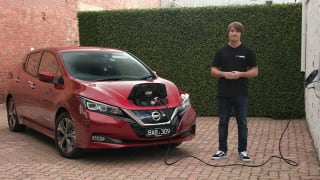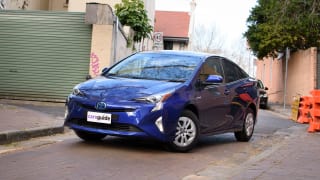Even Hyundai’s entry-level cars are relatively well specified, and there’s no change here. Every Ioniq is available in two spec levels, the Elite and Premium.
Ours was the Premium, which comes standard with an 8.0-inch multimedia touchscreen, with built-in nav, Apple CarPlay and Android Auto support as well as digital radio.
Hyundai’s own software is one of the best offerings on the market, with slick easy to navigate menus, the multimedia screen is backed by an eight-speaker sound system. Phone charging is enhanced by a Qi wireless charging bay.

The Premium’s main gains are its luxurious touches, like heated and cooled leather seats, a heated steering wheel and memory power adjust for the driver’s seat. It also gets 17-inch wheels over the Elite’s 16s, bi-xenon headlights (why no LEDs?) as well as a tilting and sliding sunroof.
Every Ioniq comes standard with keyless entry, push-start, an electric parking brake, and a semi-digital dash cluster. There’s not much spec outside of that you can really ask for, or even expect at under $40k.

Oh, and the price? That’s $38,990 before on-roads, easily undercutting the top-spec Prius i-Tech ($43,900) by a healthy margin. The Prius gains LED headlights and a head-up display, but has lackluster multimedia, and no heated seats or sunroof. Eco-conscious food for thought.
In terms of safety, you’ll get Hyundai’s full 'SmartSense' active safety suite, no matter which Ioniq variant you choose. More on that in the safety section of this review.



















